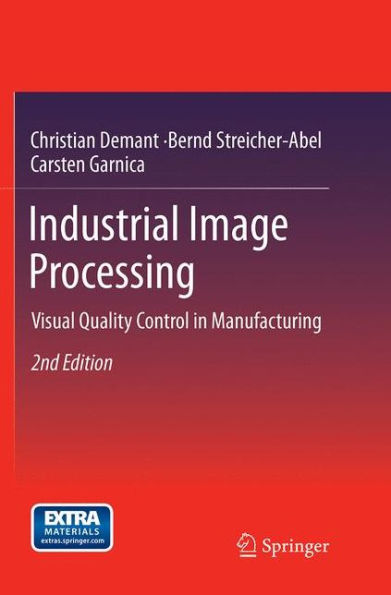Industrial Image Processing: Visual Quality Control in Manufacturing
This practical introduction focuses on how to design integrated solutions for industrial vision tasks from individual algorithms. The book is now available in a revised second edition that takes into account the current technological developments, including camera technology and color imaging processing. It gives a hands-on guide for setting up automated visual inspection systems using real-world examples and the NeuroCheck® standard software that has proven industrial strength integrated in thousands of applications in real-world production lines. Based on many years of experience in industry, the authors explain all the essential details encountered in the creation of vision system installations. With example material and a demo version of the software found on "extras.springer.com" readers can work their way through the described inspection tasks and carry out their own experiments.
1133117802
Industrial Image Processing: Visual Quality Control in Manufacturing
This practical introduction focuses on how to design integrated solutions for industrial vision tasks from individual algorithms. The book is now available in a revised second edition that takes into account the current technological developments, including camera technology and color imaging processing. It gives a hands-on guide for setting up automated visual inspection systems using real-world examples and the NeuroCheck® standard software that has proven industrial strength integrated in thousands of applications in real-world production lines. Based on many years of experience in industry, the authors explain all the essential details encountered in the creation of vision system installations. With example material and a demo version of the software found on "extras.springer.com" readers can work their way through the described inspection tasks and carry out their own experiments.
54.99
In Stock
5
1

Industrial Image Processing: Visual Quality Control in Manufacturing
369
Industrial Image Processing: Visual Quality Control in Manufacturing
369Paperback(2nd revised ed. 2013)
$54.99
54.99
In Stock

Product Details
| ISBN-13: | 9783662495919 |
|---|---|
| Publisher: | Springer Berlin Heidelberg |
| Publication date: | 10/02/2013 |
| Edition description: | 2nd revised ed. 2013 |
| Pages: | 369 |
| Product dimensions: | 6.10(w) x 9.25(h) x (d) |
About the Author
From the B&N Reads Blog
